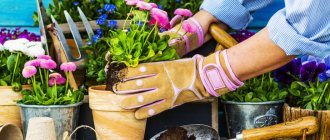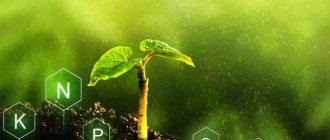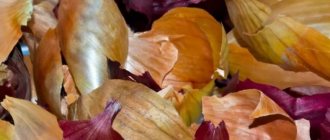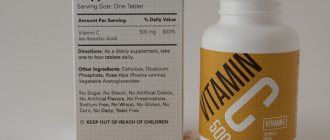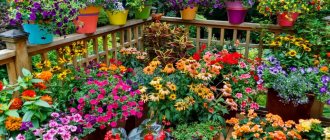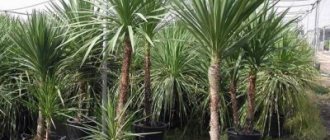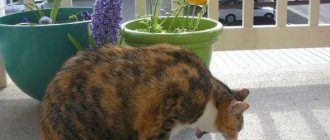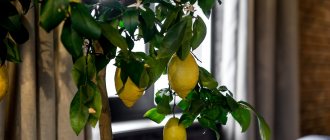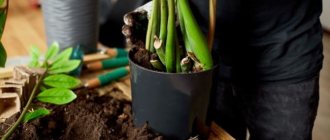General information about feeding indoor plants
The first thing worth mentioning is the size of the pot in which the plant grows.
. It is necessary to fertilize the flowers; the area of the container in which they develop is small for them. Even in the case of a voluminous flower pot, fertilizing should be applied. Since in this case the nutrients in the planting soil will be enough for a period of 2 to 4 months. After this time, fertilizers will be required.
Attention:
There are exceptions to this “rule”. These are plants that are, by nature, dormant. Their care is kept to a minimum. No fertilizing is needed here because these crops are dormant.
The second thing you need to know is that in winter all plants actually slow down their processes.
. Applying fertilizers can increase the amount of salt in the soil.
It is imperative to provide additional nutrition to flowers developing under artificial lighting.
. These are crops that, despite the short daylight hours, continue to actively develop.
Fertilizers for house plants: what are they?
Today, a lot of fertilizers have been created and are being created.
There are the following main types:
- fertilizers suitable for almost all plants growing at home;
- for decorative flowering plants;
- deciduous (without flowering).
On a note:
It is preferable to fertilize indoor plants in the dark, when there is no sunlight. This allows the plant to absorb more nutrients.
Fertilizers are divided according to the form of application into:
- liquid, diluted with water during irrigation;
- in granules that are simply placed in the soil, resulting in a slow and gradual filling of the soil with useful substances;
- for the foliar part (in the form of liquid) for spraying the main green mass.
How to understand that fertilizing is required in winter
During each growing season, plants need certain microelements. This needs to be remembered, especially for novice flower growers. When a crop is actively developing, nitrogen is needed. Adding nitrogen will allow the plant to quickly gain “greenness.” When buds form, phosphorus and potassium are needed for flowering. If flower formation is delayed, add magnesium. When there are spots on the leaves, there is a lack of iron. Boron will help strengthen the root system.
Signs of nutritional deficiency in indoor plants:
- slow growth;
- the stems are elongated and look weak;
- yellowness on the leaves;
- the foliage has faded;
- flowers do not form;
- there are no fruits on fruit-bearing crops.
As a rule, you can see the lack of fertilizing with the naked eye.
. The plant weakens and loses its decorative appearance. Immunity is reduced, making it vulnerable to pests and diseases.
Feeding flowers
Applying the right fertilizer helps restore the soil and maintains its useful composition at the required level. It is necessary to understand that each plant is individual and the approach to it is appropriate. Including in terms of fertilizing.
Important!
The need for certain microelements depends on the age of the plant and the type of crop it belongs to. For example, for some it is necessary to stimulate the formation of fruits, for others it is necessary to stimulate flowering.
All indoor plants are divided into the following types:
- decorative flowering;
- bulbous;
- decorative deciduous;
- forming fruits.
Interesting article:
The best fertilizers for indoor flowers
In order for plants to benefit from fertilizing, you need to know what to fertilize each of the above types and in what period.
Deciduous indoor plants: how to feed them correctly
Many gardeners grow it.
Among the plants in this group the following can be distinguished:
- dracaena;
- tradescantia;
- ivy;
- ficus;
- cardamom;
- alpinia;
- begonia.
Most often, these plants are grown by gardeners. Healthy decorative foliage plants will decorate any room, filling it with different shades of green. Perfect for a winter garden.
Attention!
The above crops are rapidly depleting the soil in which they are located. Transplanting into a larger pot will not solve the problems. It is necessary to apply fertilizers on time.
In winter, it is worth giving deciduous plants a rest, and fertilizing is not needed
. Only if the plants look lethargic and tired is this a sign of lack of nutrition.
Ficus
In winter, when the ficus begins to wither and lose its fresh appearance, fertilize once every couple of months.
. The dose should be 2 times less than that indicated as the main one. The reason for this is that ficus trees also “sleep” in winter and an excess of nutrients is simply contraindicated for them.
Fern
Belongs to the decorative deciduous group of plants. Ideal conditions for its growth are forests and fresh air. High air humidity and oxygen availability are especially important. This is more important than feeding.
For fertilizer use regular flower fertilizers. Apply 1 to 2 times every 30 days. Liquid with nutrients is poured into the pan. The quantity is 2 times less than for flowering ones. It is allowed to add organic matter and potassium.
Decorative flowering specimens
This group includes a huge number of plants. All of them are popular among flower growers and gardeners. The reason for this is the flowering and pleasant aroma. They can bloom at any time of the year. The duration of flowering varies.
Here are just a few examples:
- aspargus;
- fuchsia;
- gerbera;
- gardenia;
- primrose;
- azalea;
- Chinese rose (hibiscus);
- begonia;
- cyclamen;
- Phalaenopsis orchid.
These are the most popular plants among ornamental flowering plants. They need winter feeding here.
The beginning of the growing season for indoor flowers occurs at the beginning of March or June. Fertilizing is applied no more than 2 times every 7 days
. There are plants that bud and produce flowers in winter. This is Eucharis, an orchid. Granular fertilizers are suitable here. They are good because they feed the plants when they need it, that is, in doses and in a timely manner.
Important!
In winter, you need to feed the leaf every week. This is due to the heating season, when air humidity decreases. Therefore, it is worth spraying not just with water, but with complex fertilizer. The inflorescences cannot be touched.
During the flowering period, liquid fertilizing is carried out once every 7-14 days, gradually reducing the dosage by half.
Orchid: how to feed a flower in winter
Phalaenopsis blooms throughout the year. Therefore, orchids require feeding in winter.
The following rules for fertilizing orchids in winter must be observed:
- fertilize during the growth phase when fresh, young leaves and flower stalks appear;
- after transplanting to another place of growth, you must wait 30 days to apply fertilizing;
- when a flower is sick, fertilize exclusively on the leaf;
- Do not under any circumstances touch the roots that are exposed in orchids with fertilizing, otherwise you can burn them.
In winter, the orchid is fed once
. Even though the orchid is dormant, it still requires beneficial trace elements and other nutrients.
Attention!
If the flower has not received nutrients through fertilization throughout the entire winter period, it does not need to be fertilized during the flowering phase. In this case, when feeding, the duration of flowering of the orchid will be noticeably reduced.
The best time for leaf feeding is a non-sunny day or after 18:00. Room temperature from +17 to +27 °C. Spray fertilizer from top to bottom to visible roots. Flowers and buds are not touched.
Requirements for the composition of fertilizers:
- acidity (5-7 pH);
- reduced amount of nutrients in the composition;
- vitamins and amino acids;
- iron chelates (approximately 80%);
- succinic acid;
- special substances that do not allow salts to accumulate in the soil.
Fertilizers in liquid form are best suited for feeding orchids, as the substance is quickly and evenly distributed.
When not to fertilize
- If the plant gets sick or pests appear, it is better to stop feeding for a while. On the one hand, it seems that fertilizing will only improve the health of the plant and give it strength. But in fact, active growth and flowering can harm the flower. First, solve the problem with infection and parasites, and then proceed with routine feeding. When fighting pests, especially if their larvae are in the ground, like midges, sometimes you need to replant the flower in a new substrate. When transplanting, damage to the root system is inevitable. Although there will be microcracks, they will exist. And if you actively fertilize the plant at this moment, the fertilizer will get inside the flower. And a plant weakened by parasites will also get sick from our zeal.
- There is no need to fertilize a plant you just bought at the store. For sale, manufacturers feed them with various stimulants and mineral supplements, which will last for 1-1.5 months after purchase. It is best, of course, to immediately replant the plant into a fresh substrate, but most often we purchase a flowering specimen and need to wait until the end of flowering.
- There is no need to rush to fertilize a newly transplanted flower. Fresh soil is full of various microelements, which will last for a month.
General rules for applying fertilizers for indoor plants
The most important thing that needs to be observed is to moisten the soil with clean water. Only after 2 hours can fertilizing be applied.
A flower transplanted to another soil is fertilized only after 60 days.
The weaker the plant, the weaker the concentration of fertilizing. First, the root system must strengthen, and then the remaining parts.
Not only a lack of substances can lead to illness. Excess is also harmful. For example, a high copper content causes indoor flowers to begin to fade and rotting processes to occur. Therefore, it is so important to find the right remedy and decide on the dosage.
IMPORTANT rules for APPLYING FERTILIZERS for indoor plants - video
General rules
Knowing how to feed indoor flowers in winter is not enough. You also need to understand what types of fertilizers exist, how well-known store-bought insecticides differ from each other, how often and for feeding which plants they can be used. General information that you may not have paid attention to in time is also quite useful.
What is the first thing you need to remember? At least the fact that it is not recommended to apply fertilizers to the soil if it is dry. The thing is that very often professional insecticides do not bring the expected result only because they can burn the root system. And even if you have diluted the chemical solution beforehand, there is still a risk of causing serious damage to the flower roots. Therefore, watering is a must when it comes to preparing the substrate for feeding it with mineral fertilizers. In addition, do not rush to immediately begin processing after you have flooded the plant with water. Let the soil absorb moisture and this will take 2-3 hours. Only after this can you begin treating indoor flowers without fear of side effects.
It is recommended to feed indoor flowers in the evening, when the sunlight is no longer so bright. Thus, the evaporation process slows down significantly and the plant soil can be saturated with useful substances much faster. Sometimes gardeners can slightly increase the dose of fertilizing, believing that this will only improve the effect.
However, in reality, this approach will not help the matter: the likelihood that a houseplant will absorb more mineral components than it needs and should be is quite low. More likely, you will simply burn the roots, and this is clearly not the result you are striving for, right?
Homemade fertilizers
The following materials may be suitable for fertilizing indoor plants in winter: sugar, wood ash, banana or citrus peels, coffee grounds, yeast, egg shells, onion peels and others.
Sugar
helps the plant grow and develop. It is enough to sprinkle a small amount of sugar on the surface of the soil and then carry out regular watering.
Coffee grounds
will make the soil light, “airy”. It has an oxidizing effect, which is not suitable for all plants.
Banana or citrus peel
The fruits need to be prepared: chop properly and add clean water. Keep for 21 days. The result is an excellent fertilizer. It should be used once a month. You don’t need to infuse the banana peel, but immediately chop it up and place it in the soil.
Tree ash
disinfects the soil. It is mixed with soil directly in the pot. You can prepare a solution based on 1 tsp. per glass of water.
Yeast
push plants to rapid growth and development. Take 10 grams of the substance per 1 liter of water. For dry yeast - the same amount of yeast per 10 liters. Add 1 to 2 tablespoons of sugar. Leave for a couple of hours. The resulting fertilizer solution is diluted another 5-6 times.
On a note:
You can water your indoor flowers with the leftovers from tea.
Folk remedies
If you are an ardent opponent of chemistry and prefer to feed your home flowers with natural fertilizers, you can prepare them from granulated sugar, coffee, iodine, succinic acid (tablets), yeast, ash, vegetables and fruits.
You will be interested to know: A proven recipe for yeast nutrition for seedling growth
Read recipes for folk remedies here.
In winter and spring, it is not recommended to water flowers with a solution of yeast and sugar. Yeast and glucose activate growth, which is contraindicated for many plants in the autumn and winter. Due to the short day and lack of light, they will simply begin to stretch out.
Other folk fertilizers can be used in autumn and winter, reducing their dose and frequency of use by approximately half.
By the way! Hydrogen peroxide is very useful for home flowers at any time of the year. Follow the link to find out how to prepare a solution and use hydrogen peroxide.
Ready-made fertilizers for indoor plants in winter
As mentioned above, in winter many plants remain dormant. The amount of fertilizing is reduced. This rule does not work for crops that bloom throughout the year.
When you notice the first signs of a lack of nutrients, you should pay attention to ready-made supplements, which contain all microelements in a balanced state
. They give a quick effect.
There are many fertilizers from different manufacturers: for flowering, for potted plants, orchids, violets, begonias, primroses, citrus fruits, etc.
How to choose the right fertilizer for indoor flowers?
It's simple. You need to remember about the three main elements and when choosing fertilizing, choose depending on the proportions of nitrogen, potassium, and phosphorus. Nitrogen is responsible for the “green” part of the plant, phosphorus is responsible for the volume and duration of flowering, potassium increases the crop’s resistance to frost.
Fertilizing indoor flowers - video
The best homemade feeding recipes
The use of traditional feeding methods is based on a biochemical reaction similar to what occurs in the natural environment. When certain food products and familiar ingredients get into the soil, the active proliferation of beneficial bacteria begins. They normalize the microflora in the soil, and also accelerate the production of nutrients important for plants (nitrogen, phosphorus, macro- and microelements).
A similar process is used in biofertilizers. This principle has been used by humans since ancient times; today dozens of different effective home feeding methods are known.
Yeast
Feeding indoor flowers with yeast is one of the most well-known methods. They contain beneficial bacteria that have a positive effect on microflora, as well as hormones and components that regulate turgor in plant cells.
Yeast accelerates the mineralization of organic substances and actively produces nitrogen and phosphorus compounds. This feeding is useful for all plants, but is undesirable during the period of active flowering. Fertilizer recipe:
- Place 10 grams of dry yeast in 10 liters of warm water, add 2-3 tbsp. spoons of sugar.
- Mix until smooth and let sit for 3 hours.
- Before feeding, stir with cold water in a ratio of 1:5, and then pour under the root.
Read also: Brown sugar tomato reviews photo yield
To enhance the active action of yeast bacteria, a lot of oxygen is required. Within 2-5 days after applying the composition, you should ventilate the room more often, avoiding drafts. It is recommended to use yeast three times a year - in autumn, spring and summer.
Wood ash
It is used for feeding both indoor and outdoor ornamental plants. Wood ash contains a large amount of macro- and microelements (phosphorus, iron, sulfur, zinc and others), and it also reduces the risk of developing dangerous diseases in flowers.
The compounds in the ash are in an easily accessible form; they are quickly incorporated into the soil and then enter the plant tissue.
To feed, you need to dissolve 25 g of wood ash in 1 liter of cold water, then leave the solution for 5-7 days. The finished composition can be used for root application or spraying. Begonia, fuchsia, violet, cyclamen and geranium respond best to ash.
It is highly recommended not to use cigarette ash, as it contains a large amount of carcinogens and other harmful substances. Ash from hardwood trees is considered healthier because it contains fewer resin compounds.
succinic acid
It can be purchased at any pharmacy; it is a biologically active food supplement obtained by chemical-thermal processing of amber. Used as a prophylactic agent to enhance the growth of seedlings, improve seed germination and rooting of cuttings before planting.
Prepare the solution yourself at the rate of 1 tablet of succinic acid (1 g when used in powder form) per 1 liter of water. The composition can be sprayed on the stem, shoots or applied at the root. Exotic indoor plants - citrus fruits, chlorophytum, haworthia and arrowroot - respond best to this remedy. You can use the composition to work with cacti.
Eggshell
Shells are actively used as a natural fertilizer for plants, but this method has pros and cons. The shell contains large amounts of calcium and sulfur, but the compounds do not dissolve well in the soil. In addition, a high concentration of fertilizer can lead to a decrease in the acidity level of the substrate and the development of certain fungal diseases. It is not recommended to use as a regular feeding.
It is advisable to add crushed eggshells to the soil when replanting. The second popular method is preparing an infusion. To do this, you need to fill the crushed shells with water and let it brew for 4 days. The plants are watered with the resulting mixture once a month. The specific smell of the product appears due to sulfur compounds in the composition.
Aquarium water
Citrus fruit
The peels of citrus fruits (tangerines, oranges or lemons) contain large amounts of nitrogen, as well as beneficial substances for promoting resistance, plant health and rapid growth. Thanks to the disinfectant properties of citric acid, the risk of infection with viral and bacterial diseases and some harmful insects is reduced.
To feed, you need to take only fresh zest, which is filled into a container with a volume of up to 1 liter and filled with water. The composition should be left to stand for no more than 24 hours, and then the product is diluted with clean water for irrigation in a ratio of 1:3. The composition should be applied only at the root, avoiding contact with the foliage. In summer, fertilizing is applied twice, once in winter. It is not advisable to use citrus peels on succulents, cacti and orchids.
Tips for feeding indoor flowers in winter
Finally, a few tips for feeding indoor plants in winter:
- Fertilizer should be applied in moderation, avoiding overdose;
- Do not fertilize in the dormant phase, after transplanting into another container;
- for young and weakened plants, you need to take a less saturated solution than indicated in the package insert with instructions for use;
- Fertilizer is always applied to damp soil.
When the plant is weakened or not yet mature enough, the dosage is reduced, based on what is indicated in the instructions.
So, winter is a time of rest and rest for many flower crops. And still, in some cases, fertilizer and enrichment of the soil with nutrients is required.
It is important to observe moderation and then the plants will delight you even in winter.
Recently searched:
